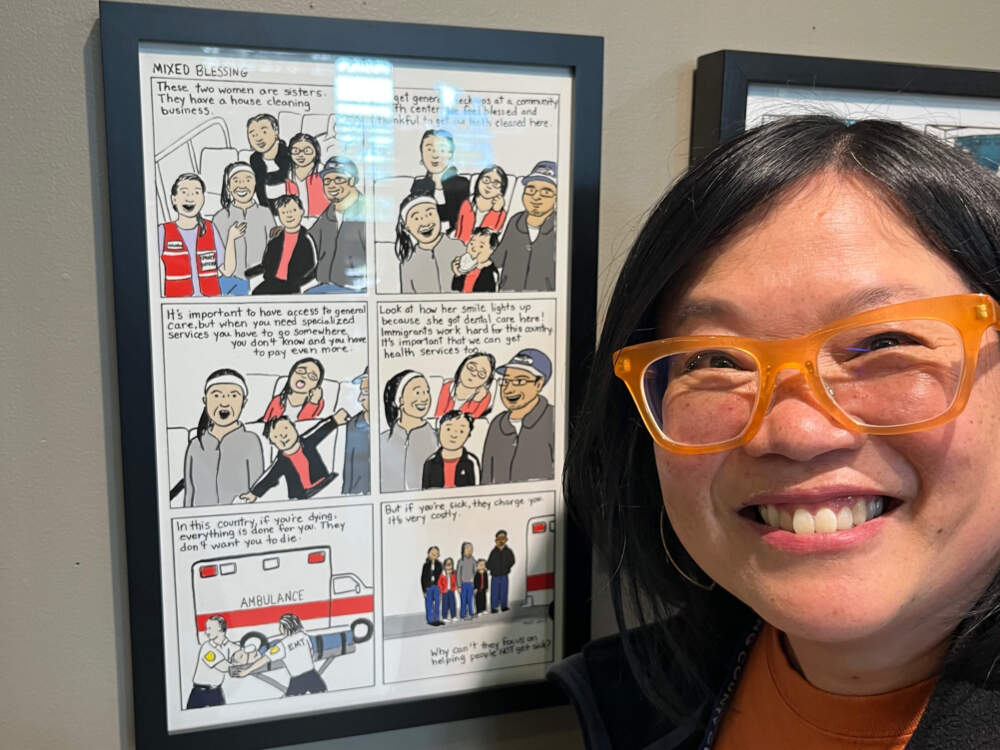In Seattle, the innovative use of comic strips has become a pivotal strategy for disseminating vital public health information. Over the past 15 years, the King County Health Department has harnessed the engaging format of comic storytelling to educate residents about important health issues, from vaccination awareness to healthy lifestyle choices. In a world where attention spans are dwindling and misinformation can easily spread, this creative approach offers a refreshing and effective means of communication.
The comics are crafted by Meredith Li-Vollmer, who has managed to blend creativity with factual health advice, making the material both entertaining and informative. The vibrant illustrations and relatable characters serve to demystify complex health topics, easing the anxiety that often accompanies discussions around health and safety. For individuals who may be reticent to engage with traditional public health communications, these comic strips present information in an accessible manner, encouraging readers to consider crucial health practices.
One notable aspect of this initiative is its adaptability. The themes of the comic strips often align with current health concerns, ensuring that the content remains relevant and timely. For instance, during public health crises like the COVID-19 pandemic, the comics addressed topics such as masking, social distancing, and vaccine efficacy in ways that resonate with the community. By using humor and relatable scenarios, these comics not only highlight the importance of following health guidelines but also foster a sense of solidarity among the readers.
Moreover, the success of this approach can be attributed to its long-lasting impact on community engagement. The use of comics encourages individuals to share the information with their peers, creating a ripple effect that extends the reach of public health messages. The shareable nature of comics on social media platforms further amplifies their impact, making it possible for vital health information to spread quickly among diverse demographics.
Engaging a wide audience is particularly crucial in a culturally diverse city like Seattle. The comic strips offer an inclusive platform that speaks to different age groups and cultural backgrounds. By utilizing humor and visual storytelling, public health messages can break through language and cultural barriers, emphasizing the communal responsibility of maintaining public health. The use of superheroes and relatable scenarios provides a sense of empowerment, prompting individuals not just to understand the information, but to act on it.
In addition to addressing current public health challenges, the comics serve a dual purpose by promoting long-term health literacy. Readers learn about preventive measures and the importance of regular health check-ups, which can lead to healthier lifestyle choices over time. As the comics often include tips for maintaining physical and mental well-being, this initiative goes beyond mere crisis response and fosters a culture of health awareness within the community.
Feedback from the community suggests that this method is working. Residents of Seattle have expressed appreciation for the engaging format, mentioning that they find the comic strips easier to comprehend than traditional pamphlets or lectures. In surveys conducted by the King County Health Department, a significant percentage of respondents indicated that they retained the health information presented in the comic format more effectively than other forms.
The collaboration between public health officials and artists like Li-Vollmer exemplifies a successful model of interdisciplinary collaboration. This blending of expertise ensures that health messages are not just scientifically accurate but also artistically compelling. Such partnerships can serve as a blueprint for other public health departments in cities struggling with how to effectively communicate health information to the general public.
Despite its many successes, the initiative is not without challenges. As with any creative expression, the risk of oversimplifying complex health issues exists. It is essential for the King County Health Department to maintain a balance between entertainment and the factual integrity of the health information presented in the comics. Continuous engagement with public health experts can help ensure that the comic strips meet educational objectives without trivializing critical health concerns.
In summary, the King County Health Department’s use of creative comic strips has become a vital tool for public health communication in Seattle. By transforming complex health information into accessible and engaging narratives, this initiative not only informs but also empowers the community. The successful fusion of art and science can enhance health literacy, foster community spirit, and ultimately contribute to the well-being of Seattle’s residents. As public health challenges continue to evolve, the innovative approaches seen in Seattle serve as important examples for other regions aiming to effectively communicate essential health information. Nurturing creative partnerships and harnessing the power of storytelling will be crucial as public health initiatives strive to connect with and support their communities.
This model demonstrates that public health information does not need to be dry and unapproachable. By adopting more creative means of communication, public health departments can make significant strides in engagement and education. In a world where diverse methods of communication are rapidly evolving, Seattle’s approach serves not only as inspiration but also as a necessary reminder of the importance of adaptability, creativity, and inclusivity in public health messaging.
Source link









